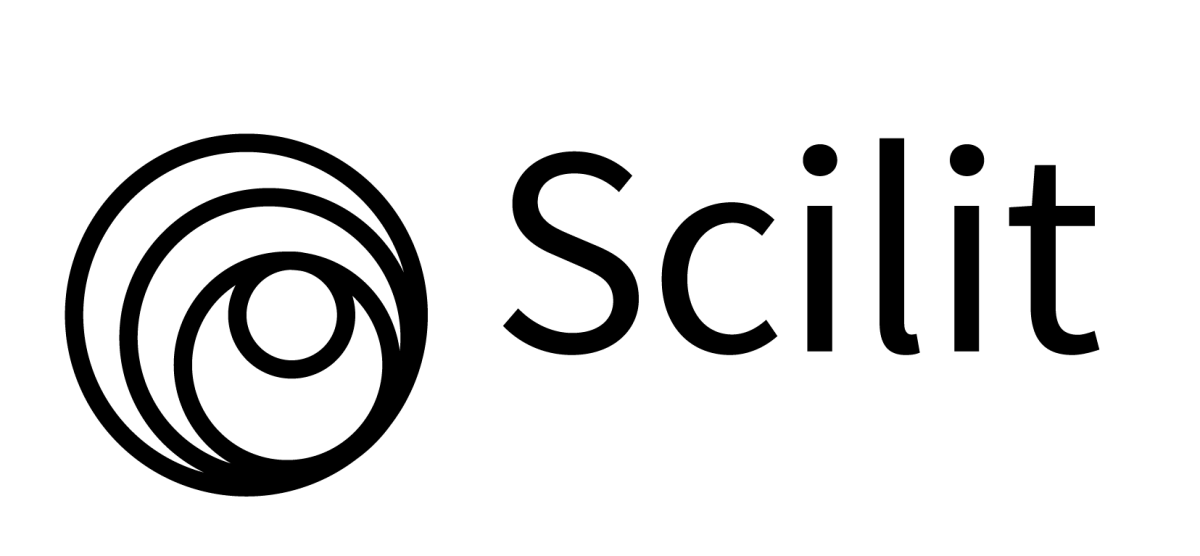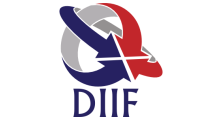Isolation, identification, and evaluation of biological activities of Daldinia eschscholtzii, an endophytic fungus isolated from the leaves of Musa paradisiaca
DOI:
https://doi.org/10.30574/gscbps.2020.12.1.0225Keywords:
Endophytic fung, Daldinia eschscholtzii, Musa paradisiaca, Secondary metabolites, Reverse transcriptase, 1,1-diphenyl-2-picryl-hydrazyl (DPPH)Abstract
Fungal endophytes of medicinal plants are gaining interest in the prospecting for biorelevant molecules due to their capacity to contribute novel compounds. This study was designed to identify and evaluate secondary metabolites of Daldinia eschscholtzii isolated from leaves of Musa paradisiaca for biorelevance. Plant leaves collection, fungal isolation, molecular identification, fermentation, and extraction of secondary metabolites were carried out following standard procedures. The crude extract was tested for antimicrobial, antioxidant, cytotoxic and antiviral properties; and further analyzed for their phyto-constituents using High performance liquid chromatography – diode array detection (HPLC-DAD). At 1000 µg/ml, D. eschscholtzii extract exhibited antibacterial activity against Bacillus subtilis, Pseudomonas aeruginosa and Escherichia coli producing IZD of 3 mm, 5 mm, and 7 mm respectively, but showed no antifungal activity. It showed antioxidant activity in the DPPH free radical scavenging assay producing an inhibition of 65.9% at a concentration of 500 µg/mL. At a concentration of 10 µg/mL, the D. eschscholtzii extract showed weak cytotoxic activity against L5178Y mouse lymphoma cells with growth inhibitions of 17.4% but showed a robust inhibition of HIV-1 reverse transcriptase activity of 97 % at 250 µg/mL. HPLC analysis of the extract/fraction revealed the presence of four bioactive compounds: aureonitol, pestalotiolactone A, cyclopenol, and palitantin. The detection of these metabolites further confirms the potentials of these endophytes as possible sources of bioactive molecules.
Metrics
References
Guo B, Wang Y, Sun X and Tang K. (2008). Bioactive natural products from endophytes: A review. Appl Biochem Microbiol, 44, 136-142.
Wang FW, Jiao RH, Cheng AB, Tan SH and Song YC. (2007). Antimicrobial potentials of endophytic fungi residing in Quercus variabilis and brefeldin a obtained from Cladosporium sp. World J Microbiol Biotechnol, 23, 79-83.
Strobel GA. (2003). Endophytes as sources of bioactive products. Microb Infect, 5, 535-544.
Strobel GA. (2002). Rainforest endophytes and bioactive products. Crit Rev Biotechnol, 22, 315-333.
Strobel G and Daisy BH. (2003). Bioprospecting for microbial endophytes and their natural products. Microbiol Mole Biol Rev, 67, 491-502.
Sandhu SS, Rajak RC, Shukla H, Aharwal PR and Kumar S. (2014). Endophytic fungi: As a source of antimicrobials bioactive compounds. J Pharm Pharm Sci, 3, 1179-1197.
Deependra Y, Kulveer SY and Singh SP. (2018). Mango: Taxonomy and Botany. Journal of Pharmacognosy and Phytochemistry, 7(2), 3253-3258.
Swathi D, Jyothi B and Sravanthi C. (2011). A Review: Pharmacognostic studies and Pharmacological actions of Musa Paradisiaca”, International Journal of Innovative Pharmaceutical Research, 2(2), 122-125.
McAlpine JB, Bachmann BO, Piraee M, Tremblay S, Alarco AM, et al. (2005). Microbial genomics as a guide to drug discovery, structural elucidation: ECO02301, a novel antifungal agent, as an example. J Nat Prod, 68, 493-496.
Zafar M and Akter S. (2011). Musa paradisiaca L. and Musa sapientum L.: A Phytochemical and Pharmacological Review”, Journal of Applied Pharmaceutical Science, 1(5), 14-20.
Okoye FBC, Lu S, Nworu CS, Esimone CO, Proksch P, Chaldi A and Debbab A. (2013). Depsidone and Diaryl Ether Derivatives from the Fungus Corynespora cassiicola, an Endophyte of Gongronema latifolium. Tetrahedron Letters, 54, 4210-4214.
Okoye FBC, Nworu CS, Debbab A, Esimone CO and Proksch P. (2015). Two new Cytochalasins from an endophytic fungus, KL-1.1 isolated from Psidium guajava leaves. Phytochem. Lett, 14, 51-55.
Uzor PF, Ebrahim W, Osadebe PO, Nwodo JN, Okoye FB and Müller WEG. (2015). Metabolites from Combretum dolichopetalum and its associated endophytic fungus Nigrospora oryzae-Evidence for a metabolic partnership. Fitoterapia, 105, 147-150.
Ebada SS, Peter Eze, Okoye FBC, Esimone CO and Proksch P. (2016). The Fungal Endophyte Nigrospora oryzae Produces Quercetin Monoglycosides Previously Known Only from Plants. Chem Select, 1, 2767-2771.
Abba CC, Nduka I, Eze PM, Ujam TN, Abonyi DO and Okoye FBC. (2016). Antimicrobial Activity of Secondary Metabolites of Endophytic Aspergillus Species Isolated from Loranthus micranthus. African Journal of Pharmaceutical Research and Development, 8(2), 136-140.
Eze PM, Ojimba NK, Abonyi DO, Chukwunwejim CR, Abba CC and Okoye FBC. (2018). Antimicrobial Activity of Metabolites of an Endophytic Fungus Isolated from the Leaves of Citrus jambhiri (Rutaceae). Trop J Nat Prod Res, 2(3), 145-149.
Arnold AE, Maynard Z, Gilbert GS, Coley PD and Kursar TA. (2000). Are tropical fungal endophytes hyperdiverse? Ecology Letters, 3, 267–274.
Schulz B, Wanke U, Draeger S and Aust HJ. (1993). Endophytes from herbaceous plants and shrubs: effectiveness of surface sterilisation methods. Mycological Research, 97, 1447–1450.
Kjer J, Debbab A and Aly AH. (2010). Proksch P. Methods for isolation of marine-derived endophytic fungi and their bioactive secondary products. Nat Protoc, 5(3), 479-490.
Akpotu MO, Eze PM, Abba CC, Nwachukwu CU, Okoye FB and Esimone CO. (2017). Metabolites of endophytic fungi isolated from Euphorbia hirta growing in Southern Nigeria. Chem Sci Rev Lett, 6(21), 12-19.
Carmichael J, DeGraff WG, Gazdar AF, Minna JD and Mitchell JB. (1987). Evaluation of a tetrazolium-based semiautomated colorimetric assay: assessment of radiosensitivity. Cancer Res, 47(4), 943-946.
Shen Q, Zhang B, Xu R, Wang Y, Ding X and Li P. (2010). Antioxidant activity in vitro of the selenium-contained protein from the Se-enriched Bifidobacterium animalis 01. Anaerobe, 16(4), 380-386.
Stadler M, Laessoe T, Fournier J, Decock C, Schmieschek B, Tichy HV and Persoh D. (2014). Apolyphasic taxonomy of Daldinia (Xylariaceae). Studies in Mycology, 77(1), 143-336.
Ju YM, Rogers JD and San Martin F. (1997). A revision of the genus Daldinia. Mycotaxon, 61, 243–293.
Karnchanatat A, Petsom A, Sangvanich P, Piaphukiew J, Whalley AJ, Reynolds CD and Sihanonth P. (2007). Purification and biochemical characterization of an extracellular beta-glucosidase from the wood-decaying fungus Daldinia eschscholzii (Ehrenb.: Fr.) Rehm. FEMS Microbiology Letters, 270, 162–170.
Tarman K, Palm GJ, Porzel A, Merzweiler K, Arnold N, Wessjohann LA, Unterseher M and Lindequist U. (2012). Helicascolide C, a new lactone from an Indonesian marine algicolous strain of Daldinia eschscholzii (Xylariaceae, Ascomycota). Phytochemistry Letters, 5, 83–86.
Zhang YL, Ge HM, Zhao W, Dong H, Xu Q, Li SH, Li J, Zhang J, Song YC and Tan RX. (2008). Unprecedented immunosuppressive polyketides from Daldinia eschscholzii, a mantis-associated fungus. Angewandte Chemie International Edition in English, 47, 5823–5826.
Zhang YL, Zhang J, Jiang N, Lu YH, Wang L, Xu SH, Wang W, Zhang GF, Xu Q, Ge HM, Ma J, Song YC and Tan RX. (2011). Immunosuppressive polyketides from mantis-associated Daldinia eschscholzii. Journal of the American Chemical Society, 133, 5931–5940.
Stadler M, Baumgartner M, Grothe T, Mühlbauer A, Seip S and Wollweber H. (2001a). Concentricol, a taxonomically significant triterpenoid from Daldinia concentrica. Phytochemistry, 56, 787–793.
Stadler M, Wollweber H, Mu A, Hashimoto T, Rogers JD, Ju Y, Wetzstein H and Tichy H. (2001b). Molecular chemotaxonomy of Daldinia and other Xylariaceae. Mycological Research, 105, 1191–1205.
Chan CL, Yew SM, Ngeow YF, Na SL, Lee KW, Hoh CC, Yee WY and Ng KP. (2015). Genome analysis of Daldinia eschscholtzii strains UM 1400 and UM 1020, wood-decaying fungi isolated from human hosts. BMC Genomics, 16, 966.
Talontsi FM, Kenla TJN, Dittrich B, Douanla-Meli C and Laatsch H. (2012) Planta Med, 78, 1020–1023.
Liu HX, Tan HB, Li SN, Chen YC, Li HH and Zhang WM. (2017). Two new metabolites from Daldinia eschscholtzii, an endophytic fungus derived from Pogostemon cablin. J Asian Nat Prod Res.
Gao Y, Guo C, Zhang Q, Zhou W, Wang CCC and Gao J. (2015). Asperaculanes A and B, two sesquiterpenoids from the fungus Aspergillus aculeatus. Molecules, 20, 325-334.
Mandelare PE, Andressa DA, Kaweesa EN, Zakharov LN and Loesgen S. (2018). Coculture of Two Developmental Stages of a Marine-Derived Aspergillus alliaceus Results in the Production of the Cytotoxic Bianthrone Allianthrone A (2018) J. Nat. Prod Phytopharmacy, 2(1), 21-24.
Sacramento CQ, Marttorelli A, Fintelman-Rodrigues N, de Freitas CS, de Melo GR, Rocha MEN, et al. (2015). Aureonitol, a Fungi-Derived Tetrahydrofuran, Inhibits Influenza Replication by Targeting Its Surface Glycoprotein Hemagglutinin. PLoS ONE, 10(10), e0139236.
Bor-Cherng Hong, Ming-Fun Wu, Hsing-Chang Tseng, Guo-Fong Huang, Cheng-Feng Su and Ju-Hsiou Liao. (2007). Organocatalytic Asymmetric Robinson Annulation of Alpha,beta-Unsaturated Aldehydes: Applications to the Total Synthesis of (+)-Palitantin. J Org Chem, 72(22), 8459-71.
J Fuska, I Kuhr, P Nemec and A Fusková. (1970). The Effect of Palitantin, a Metabolite of Penicillium Frequentans on Leishmania Brasiliensis. Folia Microbiol (Praha), 15(2), 111-6.
Downloads
Published
How to Cite
Issue
Section
License

This work is licensed under a Creative Commons Attribution-NonCommercial-ShareAlike 4.0 International License.
















